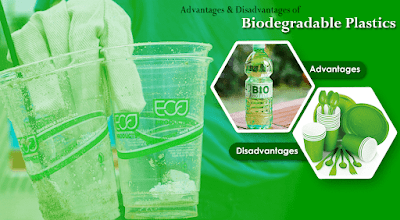Biodegradable plastic bags are made from all-natural plant-based raw materials that enable the natural decomposition process which is achieved when the bacteria and fungi present in the surrounding environment naturally metabolizes the plastics and helps to further breakdown the structure of a biodegradable plastic.
List of Advantages of Biodegradable Plastics
Reduction in Carbon Emission-
One of the main advantages of using biodegradable polymers to make
plastic bags is the significant reduction in the carbon emissions that
happen during the manufacturing process as compared to that of regular
plastic. As opposed to the normal manufacturing of plastics that create
four tons of emissions, bioplastics only emit approximately .8 tons of
carbon that add to the greenhouse effect and global warming.
Consumes Less Energy-
The manufacturing process of biodegradable plastics requires less
amount of energy and does not need fossil fuels to be recycled.
Conversely, traditional plastics demand more energy in production and at
the same time requires the burning of fossil fuel.
Eco-Friendly Disposable Solution-
Biodegradable plastics require composting or recycling to ensure proper
breakdown of the plastic pieces to enable the natural composting
process. The requirement to properly dispose/process biodegradable
plastic products automatically reduces the amount of waste that would
otherwise be sent to landfills.
Recyclable-
Apart from taking less time to break down when discarded, biodegradable
plastics can also be recycled and are non-toxic since they contain no
chemicals or toxins compared to other types of plastics that can emit
harmful chemicals, especially if burned.
List of Disadvantages of Biodegradable Plastics
Need for Composters-
The flipside of using biodegradable plastics is that there will be a
need for industrial composters to turn them into composts and
availability of the equipment in some countries can be a problem. Apart
from the cost, not all countries have the proper equipment especially if
this is not the priority of the government.
Engineering Issues-
These bioplastics are plant-based and this means that they come from
organic sources from farms such as soybeans and corn. However, these
organic plants are sprayed with pesticides which contain chemicals that
can contaminate the crops and be transferred or included in the finished
product.




0 Comments